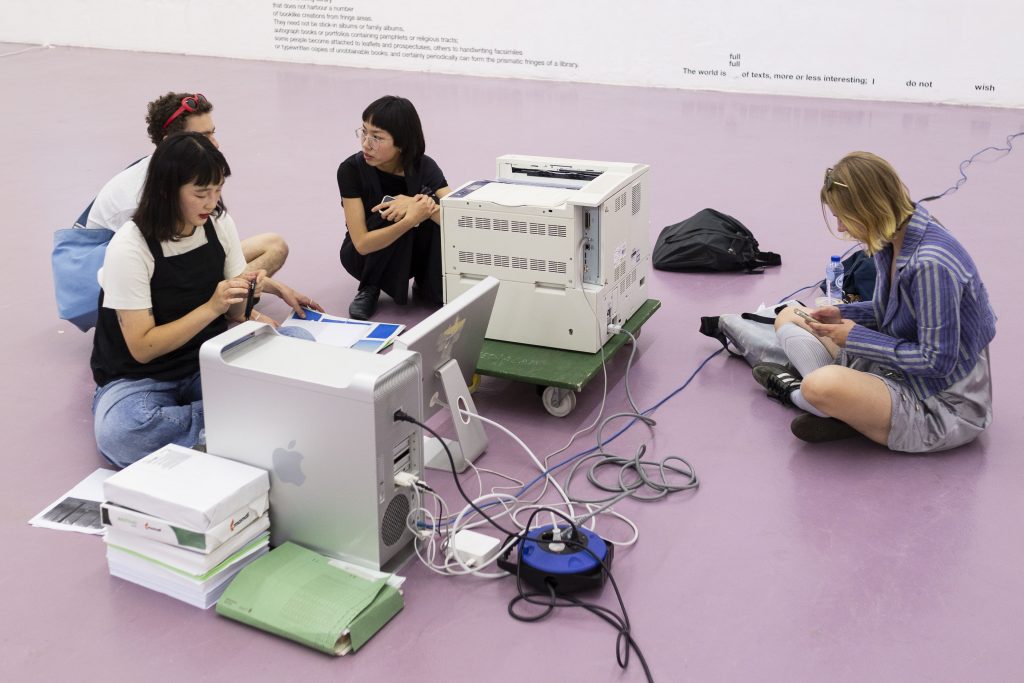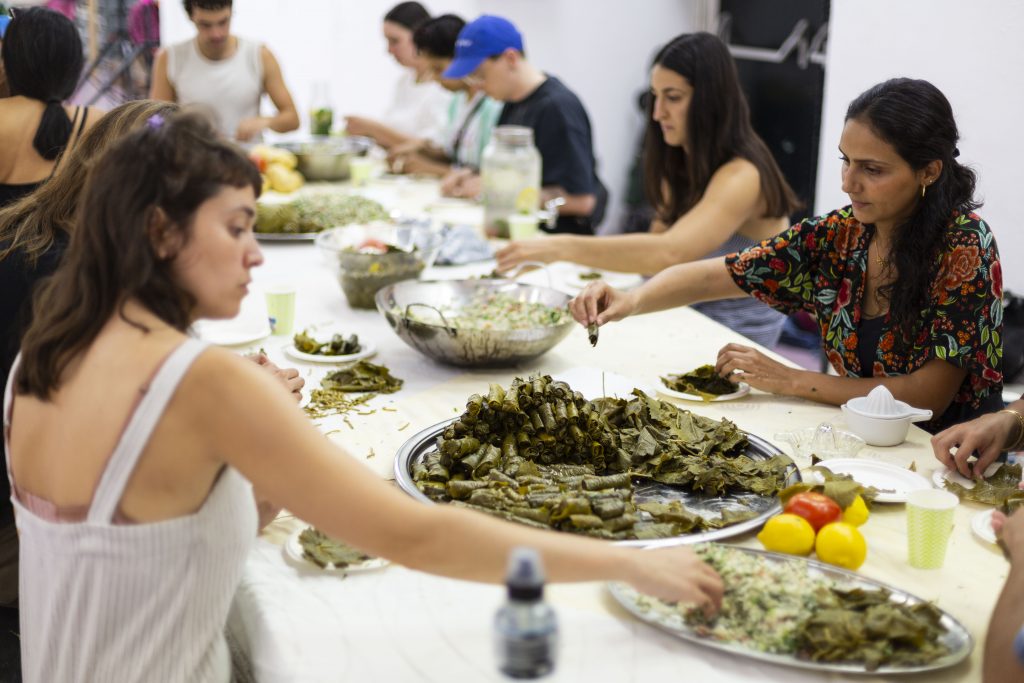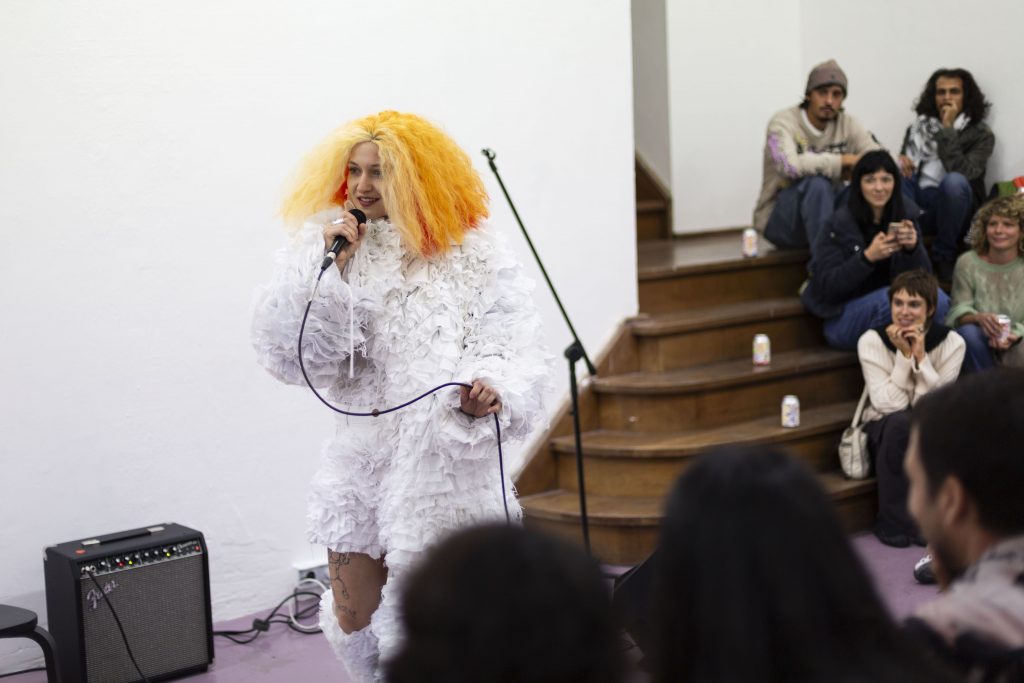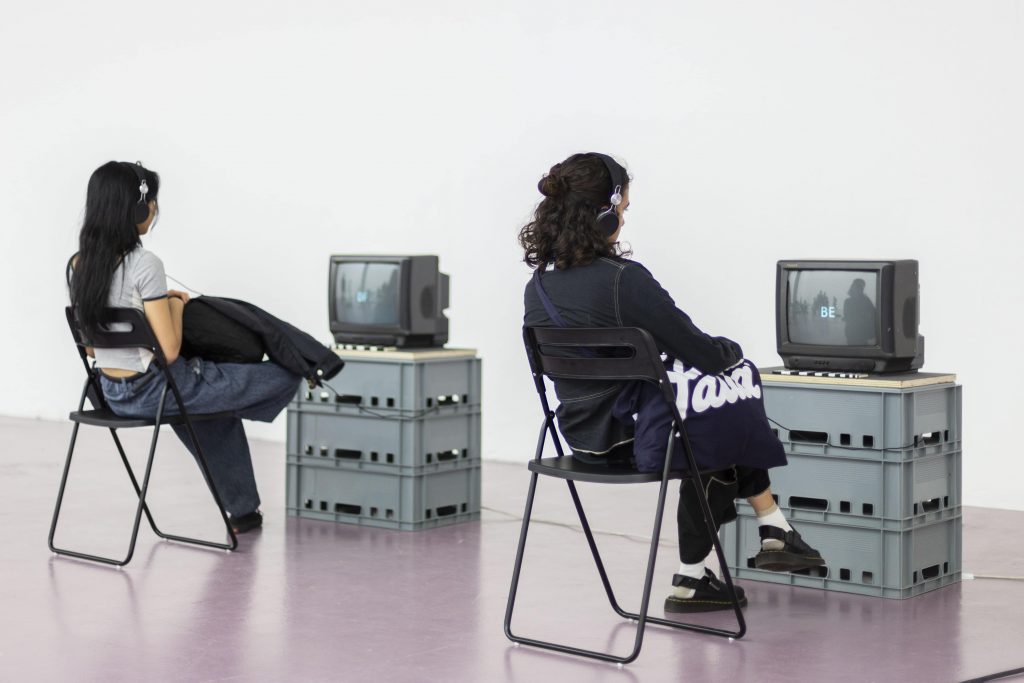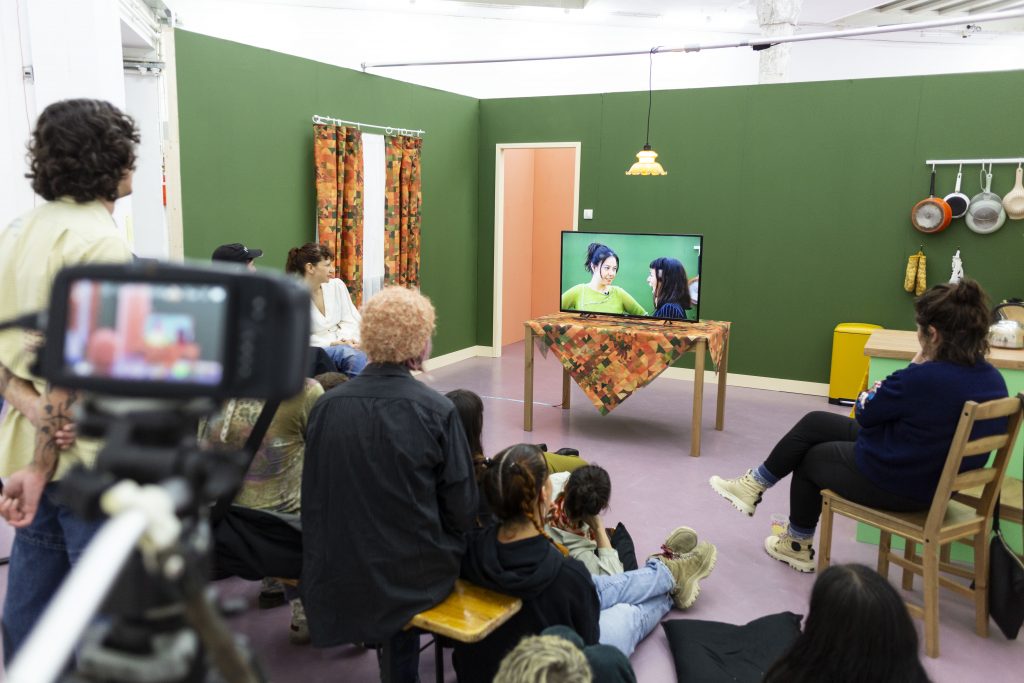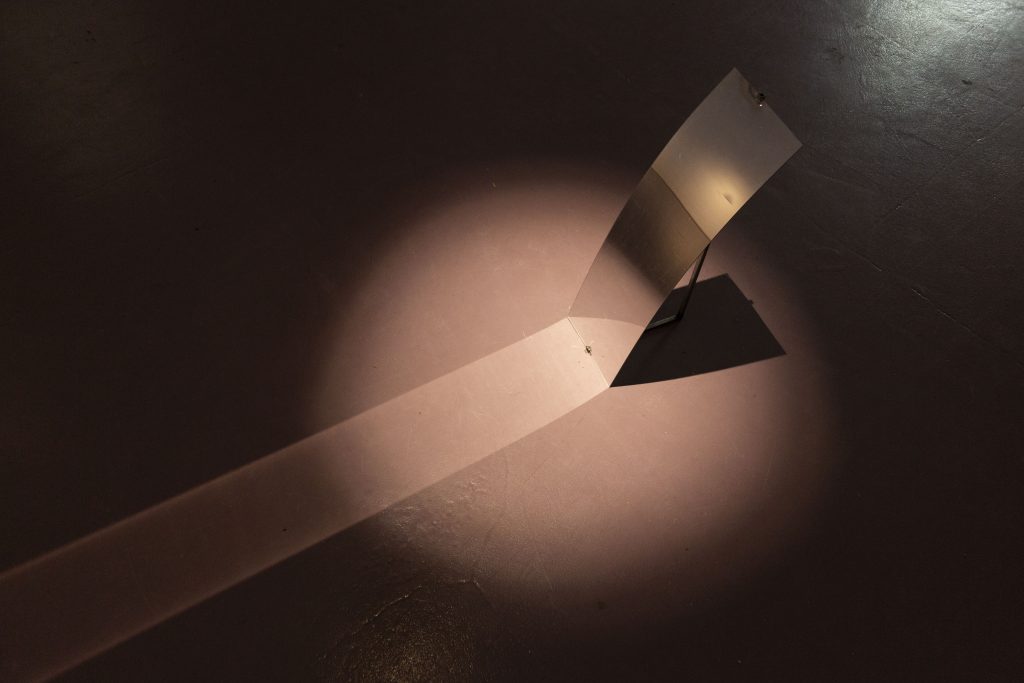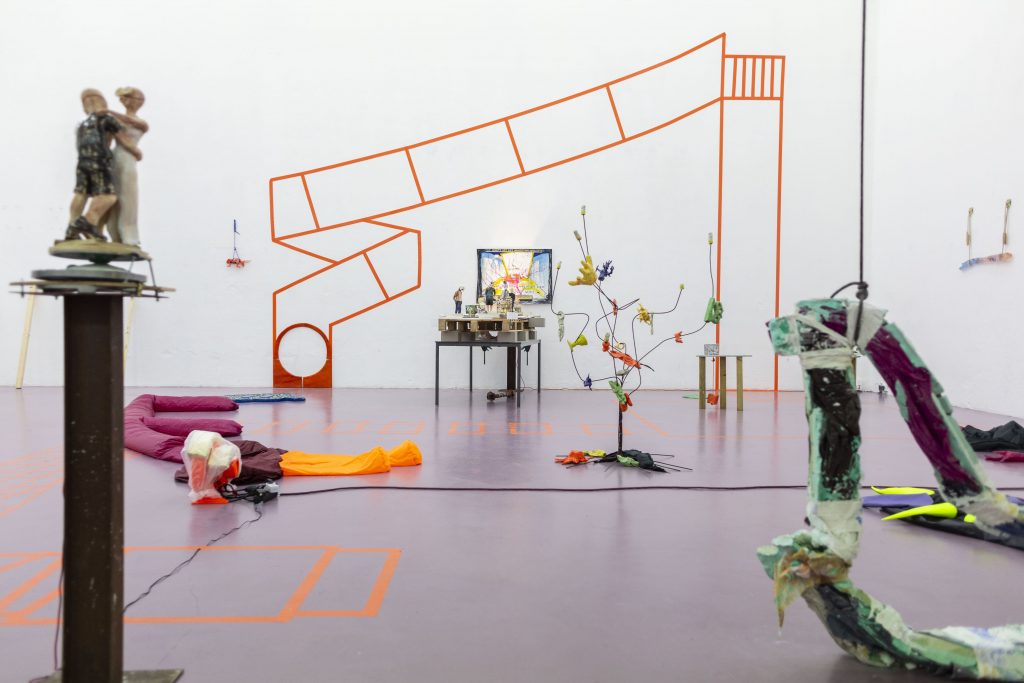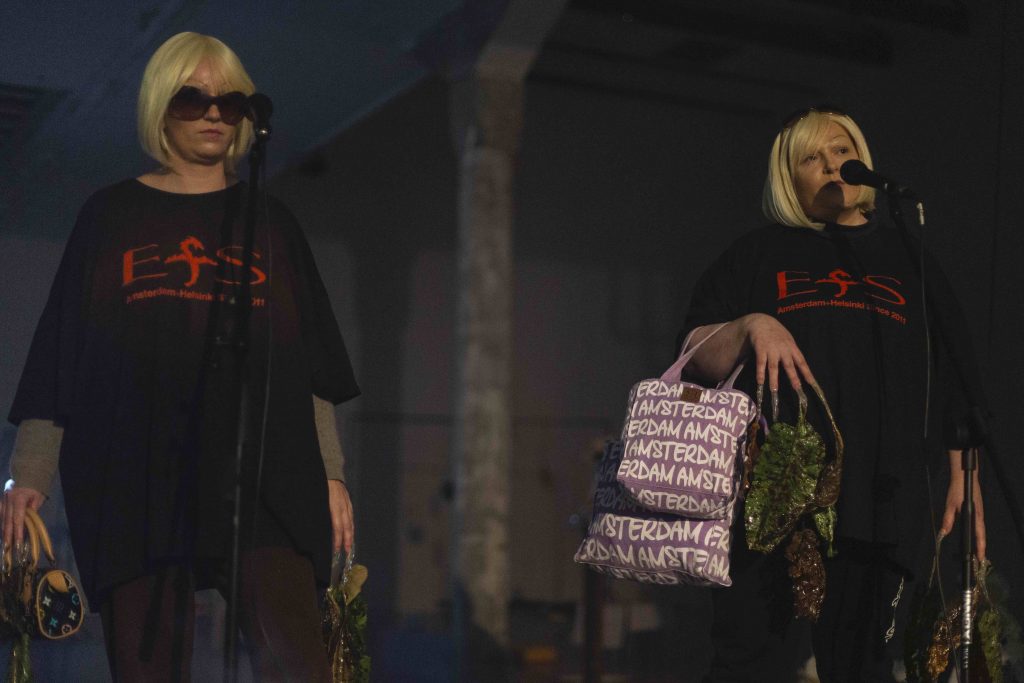W139 hosts… 2023 – Week 4
With our second edition of W139 hosts… we are excited to open up the W139 exhibition space for a dynamic seven-week long programme providing 55 makers and initiatives with the opportunity to present new projects or works-in-progress. During W139 hosts… a new constellation of makers and collectives moves into the exhibition space every week—creating a fluid and constantly changing environment.
Photography by Elodie Vreeburg.
Aubane Berthommé Martine
The Economy of Tenderness – A Collective Mapping of Social Classes in the Cultural Field
“The economy of tenderness” is a collaborative research on the contemporary proletariat, building upon the performance “Seeking Venus”. Invited to perform by Nice Flaps (life drawing collective), I developed, in collaboration with Yassin Niemandsdochter, an interactive performance. The piece reflects on physical conditions of manual workers, self-caregiving, and gazes on Mediterranean women.
Through my interactions with fellow cultural workers, I observe economic and social vulnerability faced by many, especially non-native and non-white artists and curators. We often compromise our health, artistic practice, or economic stability to sustain ourselves to contribute to the cultural scene. This position erases us from established institutions. While many of us are working-class, I notice a lack of [self]-representation of proletarians, and an absence of analysis of power dynamics in terms of classes within cultural spaces.
Nourished by intersectional theories, my research led me to define proletariat beyond an economic position: it gathers any of the categories lacking socio-economic power based on specific identity aspects such as perceived race, gender, etc. Social classes are therefore fluid and constantly re-defined; they are rarely chosen but potentially emancipatory.
I intend to map the classes within the art field, prioritising analysis of concerned individuals by conducting interviews and debates with them. By using this collaborative approach, I aim to stimulate collective thought, present a more accurate portrait of the art scene, and oppose the stigma generated by precarity and “income jobs”. Contributing to a better representation is for me a form of community care that brings tenderness into politics.
Artist Bio:
Aubane Berthommé Martinez is a working-class artist and curator who approaches arts as socio-political and educational tools. As a multidisciplinary artist, she uses various mediums to explore and re-construct elements defining one’s identity, focusing on gender and sexuality. She gazes at the gaze, reappropriating exotified and historical western aesthetics, honoring her Mediterranean background.
Aubane developed a research-based curatorial practice reinterpreting contemporary social classes via the organizations she co-founded: Squish, a queer-feminist cultural platform; and Kollection Kitsch, an exhibition series making art financially and conceptually more accessible. Through multidisciplinary events, Squish questions identity politics with an intersectional approach, while Kollection Kitsch features working-class artists exploring rejected or mocked aesthetics and themes.
Image 1
Tara White
Knowledge Exchange Site: Beyond These Walls There’s Courage
Beyond These Walls There’s Courage is a research project first presented as a solo exhibition at Southwark Park Galleries, London, UK. The show tenderly mapped the entangled dynamics between grief, intergenerational relationships, gender and protest. Operating in the overlaps between these frames of experience, Tara White uses the Anjili Ironwood Tree as a botanical motif to anchor their explorations of grief on both micro and macro scales. Developing on this work, Tara will collate interdisciplinary discussions and visual responses to produce a publication focusing on the Anjili Ironwood tree, which is notoriously difficult to fell, as a symbol of resistance, protest and wisdom in its native West Asian region.
At W139, Tara will hold workshops exploring new modes of communicating protest. Taking inspiration from the Anjili Ironwood specimens in Amsterdam and archival material at Atria and IISH, join Tara to occupy the gallery in a residency-style intervention, where visitors are invited to create their own protest ephemera to commemorate overlooked elders who laid the foundation for our rebellion. We’ll collectively produce a series of imagined protest posters and pin-badges, cascading the wall of the gallery as an ode to those who strived to better the society we inhabit.
Artist Bio:
Tara’s practice interrogates the layers of personal insight, imperial dissolution and grief that exist within the body. Taking form as sculpture, image or set design, they gesture towards multiple possible interpretations simultaneously. Often describing their work as collage, Tara’s practice operates amongst a collection of found, fabricated and personal objects. These talismans of memory, invested with profound significance are suspended in ambiguity. Tara investigates the cultural connotations attached to objects, disrupting canons to invoke alternative meanings.
Image 2 & 3
Beyond Blackness
Beyond the frame: Exploring Visual Languages and the Inarticulable in the Black Imagination
This project reconvenes graduated artists from the Blacker Blackness temporary masters program. As a constellation of diasporic artists we will initiate a process that unpacks notions of collectivity in art making and sharing. We wish to shift from the standard conventions of art production and exhibiting that simply divides space and best creates a dynamic of spectatorship and move toward a questioning of what making, building and sharing art together as Black artists looks like. We will prioritize an ethic of care and connection that also holds space for the complexity of our experiences as well as our individual artistic desires and longings.
From this jumping (entry?) point we wish to explore/reveal our working/in progress attempts at articulating a black visual language. We wish to articulate the inarticulable of the Black imagination and what that means for each artist. We wish to show our work as opposed to showing a piece of work.
We will organize a public program that aims to challenge traditional notions of art as object and delve into the realms of space, community, process, collectivity, spirituality, and healing as praxis.
Artist Bio:
We are a collective of 12 artists from across the African diaspora. We are quite young and already middle aged. We are mothers and uncles, siblings and daughters. We are queer, married, single, non-binary and CIS. We are new to the art world, or we were kicked out of it, or we left it behind. We are enthusiastically just starting out and we are already jaded. We are freshly traumatized. We are much more than 100 words. We are infinite and inarticulable. Like blackness itself, we are beyond.
Image 4
Theetat Thunkijjanukij
Copy Shop
Copy Shop is a small remote studio service that provides manual disassembly, scanning, printing, and copying of the printed matter. The copies appear within larger images, their new compositions distorting familiar, painted narratives. Previously hidden images are now revealed by furniture reconfigured, edited, and augmented. A library of books and records swells out within painted and stacked rectangular wooden boxes: a growing construction of makeshift order. Two easy chairs skirt the room. The single beds rotated to adjacent corners. A single writing desk sits by the windows. The collages were densely worked, each consisting of hundreds of sections cut from newsprint, glossy magazines, and color supplements. Angular shapes were pasted together, forming abstracted and numerously faceted sections framed within larger, further faceted compositions. Evident from the upper layer were the many layers underneath, their edges pressed upwards and highlighted by the varnish. Thicker book papers were used in more sparing quantities, their predominantly black and white images adding larger discordant elements within the main narrative of the collages.
Artist Bio:
Theetat Thunkijjanukij; an artist, is working on scaling, and reproduction of niche pieces. In Theetat’s work, he emphasizes the methodologies of reproduction as a foundational aspect of graphic design. His works contain inaccuracies originating from the reproduction procedure. While aware of the subversive potential of the disparities with the source as originated by the bootlegging process, Theetat’s subversion of the context he occupies not only brings up questions of the value of the design object but also the production of meaning through the erasure of the original.
Image 5 & 6
Sarah Emilia Maria Daniela Sølvsten
I Came Walking in Backwards
In the absence of or distance from one’s heritage, illusions and fantasies are created about what is not represented in physical form. There is a need to fill in the gaps, replace the missing pieces and make connections between the fragments. This is where my first narratives about my father’s hometown Maniitsoq in Greenland, were created – in the imagination of a child lacking a wholesome story of a place. I grew up with the Danish colonial name for Maniitsoq, Sukkertoppen (Sugar Peaks), which created an early image of my father coming from a place where mountains were made of sugar. These illusions became a way of grasping the unfamiliar, creating an even greater distance to my family history, the Greenlandic people, and their culture. There are different stages of dealing with this distance, the first being the illusion of the ‘authentic’ shaped and influenced by the outsider’s observations and narrations of the ‘foreign’. “I came in walking backwards” aims to visualise and concretise these early-stage imaginaries and is a series of works dealing with the position of the intersecting or the “third culture kid”. The goal is to make the private public through a common ground defined by the personal imaginary.
Artist Bio:
I work in the intersection of performance, live installation, and sculpture. Utilising influences and experiences from the performing arts, I explore movement and behaviour related to the history and memory of our ancestors and their impact on us.
My works depict the overlaps of tradition, mythology, and lifestyle, addressing how they are intertwined with the mediation and production of identity through new technologies and circulations of forms. Thus, my practice acts as a space for reflection on processes of transition, hybridisation and transformation, pushing these questions into material investigations of the ‘third culture child’ and other intercultural issues.
Image 7
Public Programme:
Arthur Guilleminot
Piss Soap Workshop
4 hour workshop
14:00 – 18:00
Throughout the entire Piss Soap workshop, the basics of ecodeviance will be presented and exemplified throughout the process of saponification. We will review the possibility for local and tangible regenerative design, circular ecology and how to tackle the climate crisis while providing cleaning products. The workshop will present the full process of saponification and the steps required to transform domestic waste into usable soap. We will mix the various ingredients and create a circular process informed by waste management. The participants will have the opportunity to create intimate and personal outcomes from their own (bio) wastes. At the end of the workshop, everybody will come back home with 750g of soap to cure at home. After the 3 months needed to its complete maturation, the soap will be ready to be used for washing.
Sign up by sending an email to: piss.soaps@gmail.com
Artist Bio:
Arthur Guilleminot is an ecodeviant artist and positive maverick that practices fertile and generative disobedience. Intersecting disciplines such as design, performance, fashion, and visual art, he creates provocative visuals and vulnerable semantics, casting transilient pleasureful futures for our world. He proposes radically regenerative approaches to meet our present and persistent need for change. After his art studies at the Gerrit Rietveld Academy, his work is currently researching tools for decolonizing disgust, through “Camp” aestheticism and buffoonery. These tools can be used to explore and harvest the subtleties of disgust to make us kinder in trusting our visceral impulses, disregarding imposed norms of being and keeping an active hope.
Saturday 14 Oct:
Sarah Emilia Maria Daniela Sølvsten
I Came in Walking Backwards — Cut, copy and paste
Workshop (13:00-16:00)
In a figurative sense, we use a kind of ‘cut, copy and paste’ method to understand the unknown and to create a relationship with it. We take a sample of what we know and place it next to the unfamiliar; it becomes neither the unknown nor the known but a fusion of the two. In this way, what I have chosen to call ‘the third imaginary’ arises, inspired by Pia Arke’s (1996) term ‘the third place’. ‘The third imaginary’ exists in the meeting ground between two or more cultures, languages, countries, and traditions. For many of us, this meeting ground is indescribable or intangible, and for that reason, it often remains in our imagination. At the same time, we are the physical representation of these imaginaries, but how do they take shape or visualize? How do they become language?
As part of the W139 Hosts program, I will, On Saturday 7th of October, from 1 p.m. to 4 p.m. in the room upstairs on location, host a workshop. In this workshop, we will focus on some of ‘the third imaginary’ complexities and their inherent dualities, contrasts, and conflicts. We will each invent poetic fable beings and use Ursula K. Le Guin’s writing exercises from “The Sound of Your Writing” (1998) as a guideline, as well as read, collectively, parts from ‘Image, Social Imaginary and Social Representation’ by Angela Arruda and ‘Goodbye, Little egg, Goodbye’ by Gabriela Wiener. At the end of the workshop, we each share our writing. As I wish to keep an intimate space with time for reflection and sharing of everyone’s contribution, there is a maximum of 10 participants.


